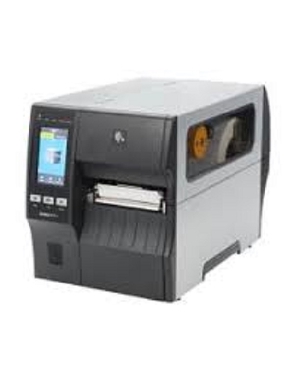We live in an information age where technology has penetrated various industries. In the medical industry, thermal barcode printers have become essential devices. They not only improve work efficiency but also ensure patient safety. This article will detail the three major important applications of thermal barcode printers in the health industry.
Patient information management
Thermal barcode printers can print medical record labels that include patient names, ages, medical history, hospital numbers, and other information. These labels can help medical institutions track patients’ visits and ensure the accuracy and security of patient information.
The application of thermal barcode printers on patient wristbands has proven to be one of the most common and significant applications in the healthcare industry. Patient wristbands are a key component of patient identification and medical information management in hospitals, so it is necessary to print clear and accurate barcode patterns to achieve information tracking and management.
These patient wristbands can contain a large amount of personal information such as patient name, age, gender, hospital number, medical record number, department, etc. This information can help medical staff quickly identify patients’ identities. The barcode pattern on the wristband can be utilized in many ways, including medication management, patient vital sign monitoring and medical equipment use, further improving the efficiency and safety of hospital operations.
Many large hospitals such as Boston Children’s Hospital affiliated with Harvard Medical School in the United States, and St. Thomas’ Hospital in London in the United Kingdom have adopted advanced thermal barcode printing technology to achieve fast and accurate printing of patient wristbands.
The HPRT HD100 is a professional-grade 4-inch thermal barcode printer that supports printing of various types and sizes of barcode labels with one-click multi-functionality for fast and clear printing. It’s widely applied for printing infusion labels, wristbands, etc. Click here for more details.
Drug identification and management
Thermal barcode label printers can print medication and infusion labels that indicate drug names, dosage, usage, and other information with barcodes. This helps medical staff quickly and accurately carry out medication dispensing. Not only that, in clinical infusion, the nurse first scans the patient’s wristband to confirm the patient’s identity, then scans the barcode on the drug label. After the system matches successfully, the medical order is executed. This method greatly improves the accuracy of medication administration.
In hospitals, medication management is a crucial aspect. Thermal barcode printers can print various types of drug labels, including drug names, batch numbers, production dates, expiration dates, and other information. These labels can assist medical institutions in tracking the usage of each drug, avoiding the use of expired drugs, and ensuring patient safety in medication management.
Medical equipment management
The management of medical equipment is also very important. Thermal label printers can print barcodes or QR code labels for identifying medical equipment and tracking its usage. Hospitals or clinics can use these labels to track equipment usage for better inventory management and equipment maintenance.
In addition, printing labels containing equipment cleaning and disinfection information, ensures that the equipment is properly cleaned and disinfected. This is very important for protecting patients from cross-infection.
In summary, thermal barcode printers have extremely important applications in the health industry. In the future, thermal barcode printers will have a wider range of application prospects in the health industry and will make more contributions to the digitalization, informatization, and intelligent development of the health industry.
Opinions of Monday, 3 April 2023
Columnist: JoyceWarren







![NPP Flagbearer, Dr. Mahamudu Bawumia [L] and NDC Flagbearer John Mahama NPP Flagbearer, Dr. Mahamudu Bawumia [L] and NDC Flagbearer John Mahama](https://cdn.ghanaweb.com/imagelib/pics/869/86902869.295.jpg)











